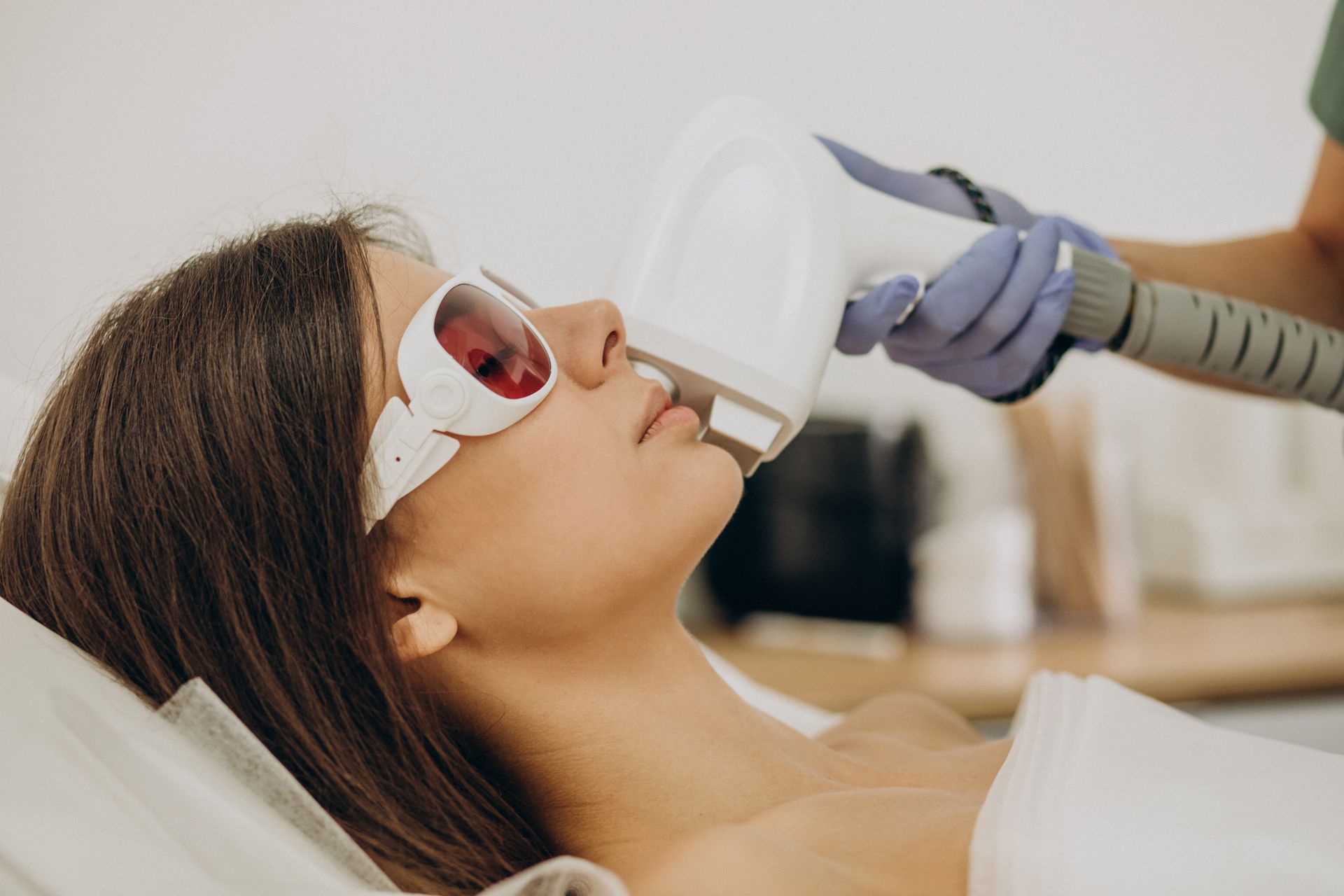Laser hair removal has become an increasingly popular method for achieving smooth, hair-free skin. Among the most commonly treated areas are the legs, where laser hair removal offers a long-term solution to the hassle of regular shaving or waxing. This guide provides an in-depth look at the process, benefits, considerations, and expectations associated with laser hair removal for legs.
What is Laser Hair Removal?
Laser hair removal is a cosmetic procedure that uses concentrated beams of light (lasers) to target and destroy hair follicles. The pigment in the hair absorbs the light, which damages the follicle enough to inhibit future hair growth. This treatment is effective for reducing unwanted hair and achieving smoother skin.
How Does It Work?
The laser emits a light that is absorbed by the melanin (pigment) in the hair. This light energy is converted to heat, which damages the hair follicles that produce hairs. This damage inhibits or delays future hair growth. Although laser hair removal effectively slows hair growth, it usually doesn’t result in permanent hair removal. Multiple treatment sessions are required for initial hair removal, and maintenance treatments might be needed.
Benefits of Laser Hair Removal for Legs
- Long-Term Solution: Unlike shaving or waxing, laser hair removal offers a more permanent reduction in hair growth. After a series of treatments, many people experience a significant decrease in the amount and thickness of hair.
- Precision: Lasers can selectively target dark, coarse hairs while leaving the surrounding skin undamaged.
- Speed: Each pulse of the laser takes a fraction of a second and can treat many hairs simultaneously. The laser can treat an area approximately the size of a quarter every second. For legs, sessions can take around 20 to 45 minutes depending on the area.
- Cost-Effective: Over time, laser hair removal can be more cost-effective than the ongoing expenses of waxing, razors, or depilatory creams.
The Laser Hair Removal Process
1. Consultation
Before undergoing laser hair removal, you will have a consultation with a licensed practitioner. During this session, your medical history and skin type will be reviewed to determine if you are a suitable candidate. The practitioner will also explain the procedure, potential risks, and the expected outcomes.
2. Preparation
To prepare for the treatment, you should avoid sun exposure and tanning products for at least six weeks before the procedure. You should also avoid plucking, waxing, and electrolysis, as these can disturb the hair follicle, making the laser treatment less effective. Shaving is recommended the day before the treatment as it leaves the hair shaft intact below the skin surface.
3. Procedure
During the procedure, the technician will apply a cooling gel or a cooling device to your skin to protect it and reduce the risk of side effects. You and the technician will wear appropriate eye protection. The laser device will be adjusted according to the color, thickness, and location of the hair being treated as well as your skin color.
The technician will then apply the laser to the treatment area. You may feel some discomfort, often described as a rubber band snapping against the skin. However, the discomfort is usually minimal, and the cooling device helps alleviate it.
4. Post-Treatment Care
After the procedure, you may experience redness and swelling for the first few hours. Applying ice packs or anti-inflammatory creams can help manage any discomfort. It’s crucial to avoid sun exposure and use a broad-spectrum sunscreen daily for several weeks post-treatment to prevent changes in skin color.
What to Expect
Number of Sessions
Laser hair removal typically requires multiple sessions to achieve the desired results. This is because hair growth occurs in cycles, and the laser is most effective during the growth phase (anagen phase). On average, 6 to 8 sessions spaced 4 to 6 weeks apart are needed to target all hair follicles during their growth phase.
Results
Results vary from person to person. Most individuals experience a 10-25% reduction in hair after the first treatment. Over the course of multiple treatments, the reduction becomes more significant. Maintenance sessions may be required once or twice a year to maintain the results.
Side Effects
Common side effects include:
- Redness and swelling in the treatment area.
- Temporary irritation or discomfort.
- Changes in skin color, particularly in people with darker skin.
Rare side effects include blistering, crusting, scarring, or changes in skin texture. Choosing a licensed and experienced practitioner reduces the risk of serious side effects.
Considerations
- Skin and Hair Type: Laser hair removal is most effective on people with light skin and dark hair because the laser targets the pigment in the hair. Advances in technology have made it possible to treat a broader range of skin tones and hair colors, but effectiveness can still vary.
- Cost: The cost of laser hair removal can vary based on the size of the treatment area and the number of sessions required. On average, treating the legs can range from $200 to $500 per session.
- Practitioner’s Expertise: Ensure that the procedure is performed by a licensed and experienced practitioner. The success of the treatment and the risk of side effects are highly dependent on the skill and experience of the person performing it.
Conclusion
Legs Laser Hair Removal for legs is a popular and effective method for achieving smooth, hair-free skin. With its long-term benefits, precision, and speed, it offers a convenient alternative to traditional hair removal methods. By understanding the process, preparing adequately, and choosing a skilled practitioner, you can achieve the best possible results and enjoy the confidence that comes with having smooth, beautiful legs.

